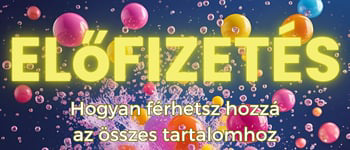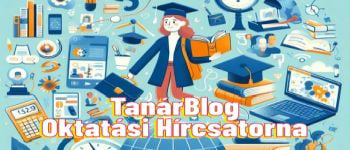Finals -light (nyelvkönyv a középszintű érettségihez!)
Hírek - 2009. július 12.
MEGJELENT! Középszintű érettségire - magyaroknak, érettségi előtt állóknak. Érdeklődni és megrendelni a könyvet 3000 Ft-os áron itt lehet: [email protected].
(Megj.: a könyvhöz dupla CD és Tanári kézikönyv is tartozik!)
És most jöjjön egy angol bevezető a könyvhöz:
Introduction
The Finals light is a coursebook that helps students prepare for the középszintű érettségi. It is a coursebook and not a collection of past papers or practice tests: each and every unit is a series of communicative activities related to a certain topic, which engage and motivate students. Yet, the book does prepare students for the exam: it is full of tasks that follow the structure of tasks in past exam papers and devotes considerable time to developing exam strategies. It is this combination that we hope makes The Finals light an attractive choice in grade 12.
Familiar topics seen from a new angle
One of the greatest problems we have encountered in grade 12 is that students are asked to discuss topics they already have dealt with several times in the course of their studies. The mere mention of e.g. travelling might induce yawns and students often complain about not experiencing a sense of progress. In The Finals light we have tried to find fresh angles to these well-known topics in order to revise and expand students’ knowledge without appearing to be repetitive. When selecting these new angles, our priority was relevance for students in their final year before graduation: instead of comparing living in a village and living in a city, the focus is on living in a dorm vs. renting a flat, as these are arrangements that students might need to decide between as they start university in the following year. A few other examples from the book:
- school: what a GAP year is and why it is useful
- work: “a day in the life of” – the realities of some popular jobs in Hungary today
- health: alternative treatments
- crime: cyber-crime
- environment: fair trade and volunteer vacations
- art: contemporary performance art
- food: basic rules for kitchen hygiene
- travelling: green travel

Grammar corner and grammar practice
As the book was written for Hungarian students studying in Hungary, we decided to do the explanation/revision of the relevant grammar areas in Hungarian. The approach to grammar we adopted is based on semantics and the role grammar plays in communication. The Grammar corner at the end of the book contains a large number of example sentences, along with their Hungarian equivalent, so that students can see how grammar contributes to meaning. The grammar practice exercises in each unit (The more, the grammar) are linked together by a common, genuinely motivating, topic related to what the unit is about, so that students do not feel the monotony or dullness usually associated with controlled practice. Some examples:
- how to write a sitcom
- the new seven wonders of the world
- the mental health of teenagers
Lexis: everyday expressions, focus on chunks
Research has shown that chunks contribute to fluency to a much greater extent that the knowledge of individual lexical items. Therefore, most vocabulary focussed on in the book is expressions that students might not find in a traditional dictionary, yet expressions that occur with a very high frequency in everyday English. Vocabulary is always presented in context, and students are often asked to deduce meaning from the context, a skill that will help them take responsibility for their own learning even after the course ends. In the book, we have given special attention to functional exponents that will help students communicate or solve a task more effectively: every unit has a Language box focussing on a certain function and providing students with a number of ways to realize that function in English. Some examples:
- weighing alternatives and choosing one of them
- reaching a compromise
- asking for information
- expressing approval and disapproval
Personalized speaking tasks, engaging with the content
There are a huge number of speaking tasks in the book. Most sections have a speaking lead-in and a speaking follow-up. Frequently, these serve partly to recycle or consolidate lexis so that students see the relevance of certain lexical items in real communication. At the same time, another aim of these speaking tasks is to give students the opportunity to engage with the topics and to express their personal opinions about issues that have direct relevance to their life, from illegal downloading to cool trends with teenagers. As students discuss how to answer questions at a job interview or how to reduce the amount of pollution they are indirectly responsible for, they develop not only their language competence, but also their competence as a member of society, or the labour force, or a local community. Other examples of speaking tasks:
- discussing how flatmates should share the housework
- drawing up an alternative timetable for secondary school
- discussing the pros and cons of working from home
Authentic, contemporary reading texts
All the texts in the book have been selected for their appropriacy and relevance for the school-leaving age group. They come from authentic modern sources such as bogs, websites and personal communications. While some degree of adaptation was necessary in certain cases, we generally followed the ‘grade the task not the text’ principle, which bears more resemblance to what students will need to do in real life. Students are often asked to react to texts in ways they would do outside the classroom: skim them quickly for general impression, or scan them to find specific information. Numerous exercises are devoted to various ways of strategy training for the exam. Exercise types include:
- matching statements to relevant parts of the text
- inserting missing phrases into a text
- matching sentence halves to summarize the main ideas of a text
- true/false/doesn’t say
- matching questions to answers, or headings to paragraphs
Authentic listening, and Question time
The sheer amount of recordings indicates the central role listening plays in the book. Students are exposed to a number of very different speakers and to various text types, from poem to informal conversation. The listenings, which include a variety of accents: British, American, Canadian, feature speakers from a variety of backgrounds, from working class to upper middle class. Some of the recordings have been scripted, but most listenings are authentic in the sense that we explained to the speakers what the task was without feeding them any language we wanted them to include in their speech. Often the opposite happened: having listened to the recording, we selected some chunks and grammar structures or functional exponents for students to focus for students to focus on. And integral feature of The Finals lightis Question time, in which we asked native speakers to answer ten questions that students could possibly encounter at the oral exam in about half a minute each. These five-minute recordings of spontaneous and unplanned speech are exploited for a variety of purposes in the book, including:
- vocabulary extension
- managing discourse
- intensive listening
- chunks for fluency
- hesitation devices
Writing: guidance and models
The book adopts a mixture of the product and process approach to writing. A model is provided for all the genres that have appeared in középszintű érettségi papers in the past years. These were written by a native speaker with extensive teaching experience who teaches writing skills for English majors at a Hungarian university and has also been involved in developing the two-level érettségi exam. For those who benefit more from a process approach, we encourage drafting and redrafting, as well as collaborative writing and peer-editing throughout the book. With some more difficult genres, and especially towards the beginning of the book, there are some step-by-step guides that take students through the process of creating a piece of written work. Finally, at the very first writing task, students are familiarised with the evaluation criteria used at the érettségi so that they know what exactly they are expected to do. They also practice applying these criteria to their own and others’ writing, in genres such as:
- letter of advice
- cover letter
- refusing an invitation
- letter of application
- letter of enquiry





